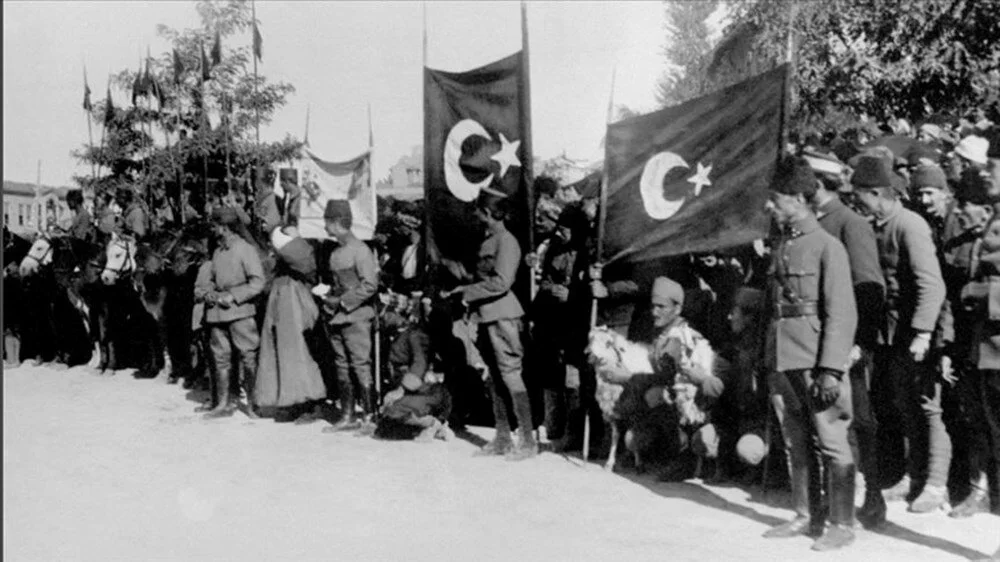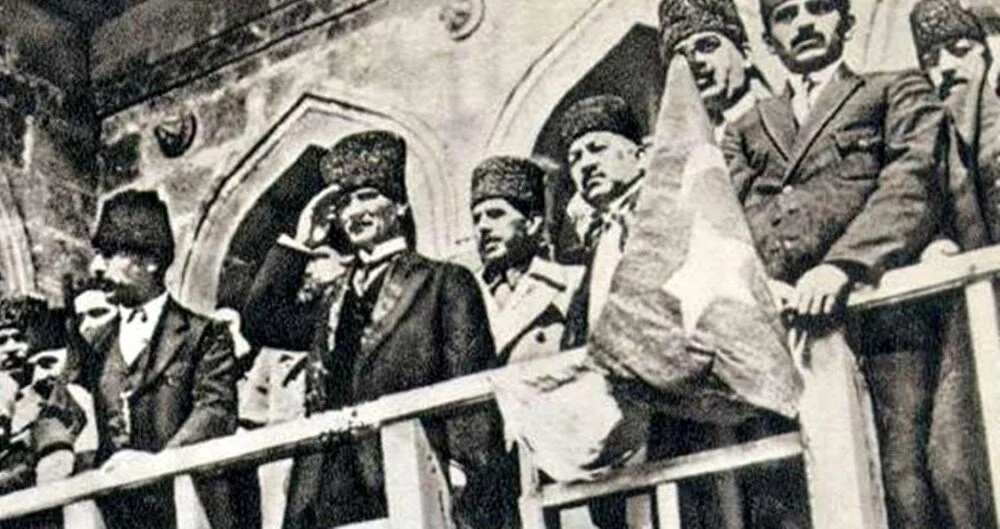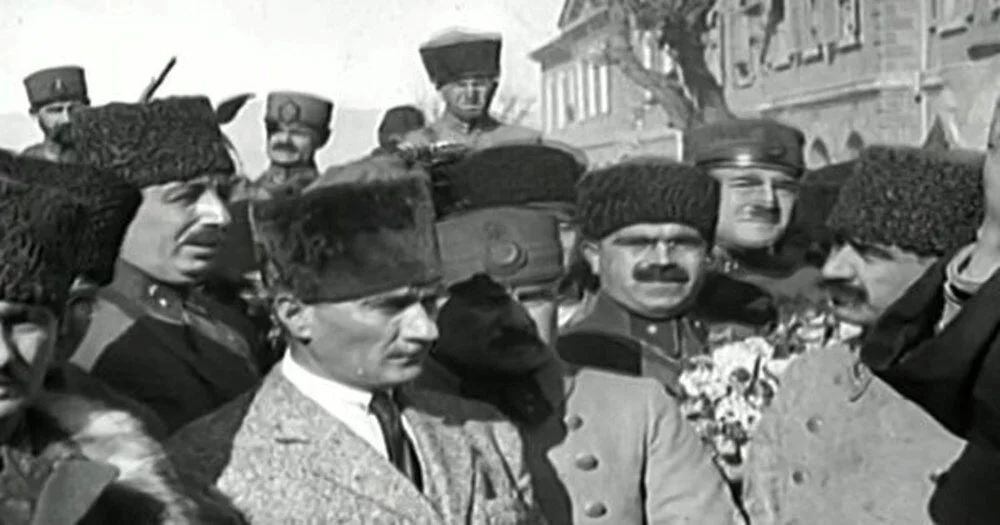What happened on September 9th? The place and importance of the Liberation of Izmir in history

September 9th Liberation of Izmir
The Turkish army, which destroyed the main forces of the enemy with the Battle of the Commander-in-Chief, ended the occupation of Izmir for 3 years, 3 months and 24 days on September 9, 1922 with the historic order of Commander-in-Chief Gazi Mustafa Kemal, “Armies, your first target is the Mediterranean, forward”, and paved the way for full independence leading to the Lausanne Peace Treaty.
The liberation of Izmir from enemy occupation became the symbol of the liberation of Anatolia, which was occupied at the end of the First World War with the Armistice of Mudros signed between the Allied Powers and the Ottoman Empire on October 30, 1918.

THE SAGA OF THE LIBERATION OF IZMIR FROM ENEMY OCCUPATION
At the end of the First World War, the Entente Powers signed the Armistice Treaty of Mondros with the Ottoman Empire on October 30, 1918 and started to occupy Anatolia based on this agreement. On May 15, 1919, Izmir was occupied. The Turkish nation started resistance movements in 1919 to save its homeland against the occupation movements. These movements gained a centralized character in a short time after Mustafa Kemal Pasha set foot in Samsun on May 19, 1919.
In this process, important steps were taken towards the liberation of the country with the First İnönü, Second İnönü, Aslıhanlar-Dumlupınar and Sakarya Square Battles won one after another. The carefully and meticulously prepared offensive plan was put into practice on the morning of August 26, 1922. The Great Offensive of August 26-30, 1922 is the last phase of the Turkish War of Independence. In the August 30 “Battle of the Commander-in-Chief”, the most important part of the Greek army was neutralized in one day. Thus, the final result was achieved in five days and the plan prepared was implemented with complete success.
On August 31, Commander-in-Chief Mustafa Kemal Pasha gathered Chief of General Staff Fevzi (ÇAKMAK), Western Front Commander İsmet (İNÖNÜ), army commanders Yakup Şevki (SUBAŞI) and Nurettin Paşaları in Çalköy, where he established his headquarters, and stated that it was right to follow the Greek forces that could escape and to advance towards the Aegean from three columns in order not to merge with the forces in and around İzmir.

On September 1, Commander-in-Chief Mustafa Kemal Pasha issued a communiqué to the armies and gave the following historic order: “I would like all my friends to advance keeping in mind that there will be more battles in Anatolia and I would like everyone to continue to give their mental strength, valor and patriotic resources without sparing in competition. Armies, your first objective is the Mediterranean. Forward!”. Thus the fate of the enemy was sealed. Upon this historic order given in Çalköy, 8-9 days would be enough to see the “Mediterranean” in İzmir and the “Marmara” in Mudanya.
SOLDIERS SHOWERED WITH FLOWERS
On September 2, after a relentless pursuit that began on August 31, Turkish forces entered the ruined city of Uşak. Here General Trikopis, the Commander-in-Chief of the Greek Army, was taken prisoner.
The Pursuit was proceeding at superhuman speed. The Turkish soldiers did not want to rest or sleep. Because he saw that every town, village and city he liberated was burned by the Greeks and the Turks in the region were being mercilessly massacred.

On September 9, 1st Corps reached Kemalpaşa, 2nd Corps reached Manisa and 4th Corps reached Turgutlu. In the north, the 3rd Corps attacked the Greek positions on Kazancıbayırı, expelling the enemy and advancing as far as Bursa. The Turkish cavalry entered Izmir amid tears of joy from Izmiris who had been in mourning for more than three years. The Turkish flag was hoisted on the Government House and Kadifekale. Mürsel Pasha, the commander of the First Cavalry Division, informed Ankara that Izmir had been entered. The joy of the Turkish people in Izmir was so great that our soldiers were showered with flowers.
On September 9, our 3rd Corps threw back the Greek troops defending Bursa and liberated the city. After the Turkish Army captured Izmir and Bursa, Mustafa Kemal Pasha issued a declaration to the nation. Greek troops retreating from Torbalı and the Menderes Valley were captured by our cavalry after a short battle around Seydiköy. On September 9, Menemen was liberated without being burned and Seydiköy fell to Turkish forces. Advancing with incredible speed, the infantry troops arrived in Izmir with the Commander-in-Chief a day later.

On September 18, 1922, with the Pursuit Operation that lasted until September 18, 1922, all Greek soldiers in Western Anatolia were expelled from our borders.
On May 15, 1919, the enemy armies that landed in Izmir, occupied almost half of Anatolia and attacked our homeland for more than three years with the dream of establishing a Greek Asian Empire here, were finally completely cleared from this part of our homeland on September 18, 1922, with not a single soldier left.
The successful conclusion of the pursuit operation is not only about the clearing of Western Anatolia from the Greeks. With this operation, other vital strategic targets from the Izmit region to the Bosphorus Strait, from the Balıkesir region to the Dardanelles Strait, were also skillfully liberated from the occupation of the Entente without incident and peacefully.
The Pursuit Operation is a great work that proves the might and capability of the Turkish army, its heroism, as well as its high command and administration in the military and political fields.

This victory of the Turkish Army started the process leading to Turkey’s independence.
This victory of the Turkish Army started the process leading to the Mudanya Armistice Treaty. After the Mudanya Armistice Treaty, Turkey signed the Lausanne Peace Treaty on July 24, 1923. Thus, the Turkish nation recognized its existence to the whole world and the Turkish state gained its full independence.
Liberation of Izmir Source






